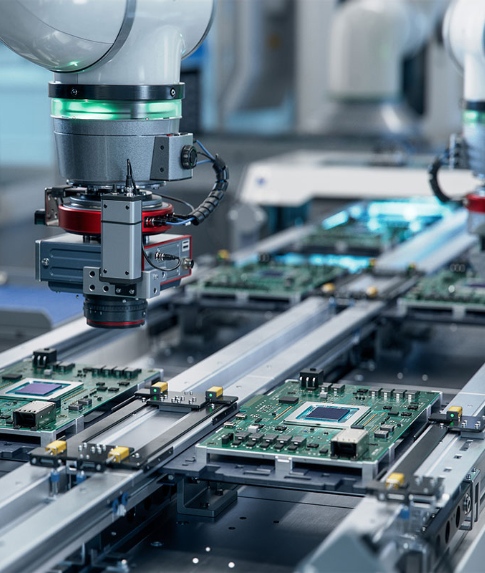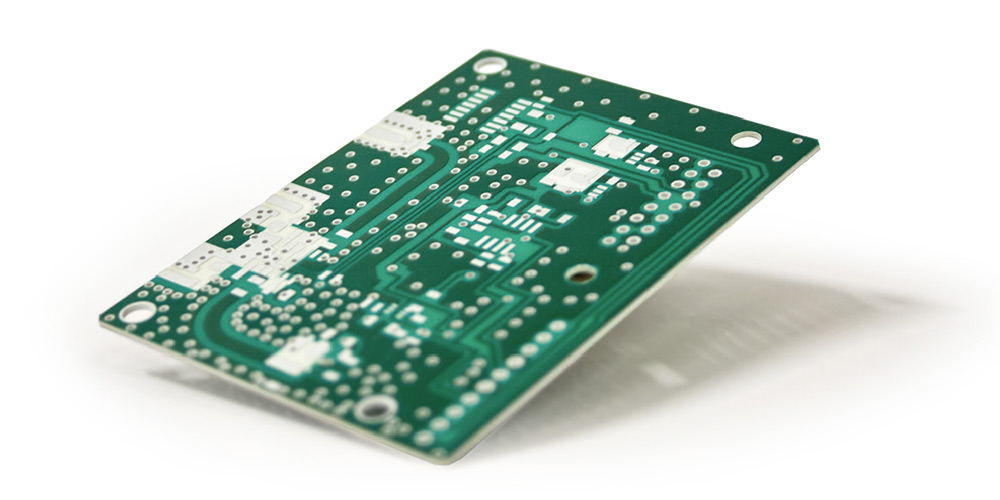


In the design and manufacture of electronic products,The materials used for circuit boards play a fundamental and critical role, and their performance is directly related to the operational efficiency, stability, and service life of electronic equipment.Rogers is mainly used for high-frequency materials, which are slightly softer and are suitable for products with lower frequencies and rated temperature settings, high dielectric constants, high stability impedance, and signal loss dispersion coefficients.——Rogers material PCBs can provide the most reliable results with minimal loss of electronic signals.Rogers and FR4 are favored by electronics engineers as the two most widely used circuit board materials on the market today. So what exactly are the differences in their performance?


I. Electrical Performance: A Key Factor in Signal Transmission
|
Norm |
FR4 material |
Rogers high frequency boards |
|
Dielectric constant |
4.2-4.7(frequency dependent) |
3.48(Low and stable, flat frequency response) |
|
Loss factor |
0.015(Significant signal attenuation at high frequencies) |
0.0037(Low signal transmission loss) |
|
Impedance control |
Lower accuracy, difficult to match high frequency circuits |
Lower accuracy, difficult to match high frequency circuits |
Summaries:Rogers High Frequency BoardWith low dielectric constant and stabilized loss factor, it significantly reduces signal transmission delay and loss, which is especially suitable for high-frequency and high-speed applications such as 5G communication and radar. FR4, on the other hand, performs stably in common electronic devices, but its high-frequency performance is limited.
II. Thermal performance: the guarantee of stable operation of equipment
1. Coefficient of thermal expansion
The coefficient of thermal expansion measures the degree of dimensional change of a material in response to a change in temperature. the coefficient of thermal expansion (Z-axis CTE) of FR4 panels is relatively high, typically in the range of 70 - 90ppm/°C.Temperature changes can easily lead to metallisation through-hole problems, affecting board stability.
Rogers materials have low coefficients of thermal expansion, e.g. RO4350B 32 ppm/°C,Good dimensional stability, can adapt to temperature changes, to ensure stable operation of multi-layer circuits.
2. Heat resistance
The glass transition temperature (Tg) of FR4 boards is generally between 135 - 170°C, with a maximum service temperature of over 130°C or more. When it is exposed to high temperature for a long time or undergoes high temperature processes such as lead-free reflow soldering, its performance may be affected to some extent, such as deformation, delamination and other phenomena.
Some of the products in Rogers HF boards are heat resistant, have high thermal conductivity for rapid heat dissipation, are stable, can withstand higher temperatures, and are suitable for high temperature environments such as aerospace and military equipment.
III. Mechanical Properties: Considerations for Stability in Processing and Use
Processing characteristics
mechanical strength
IV. Costs and areas of application: a combination of selection factors
1. costs
FR4 production process is mature, raw material supply is sufficient, the price is low.
Rogers high-frequency board material and process costs are high, but in high-performance, high-precision requirements of the special application scenarios, Rogers high-frequency board by virtue of its excellent performance can bring about a substantial increase in product performance, and therefore has an irreplaceable position, commonly used in 5G communications, aerospace, military equipment and other fields.
2. Areas of application
FR4 performs well in conventional low to medium frequency circuits, and its stable performance and low cost make it an ideal choice for most electronic products.In consumer electronics, industrial control, automotive electronics field and other general electronic products, FR4 can meet the basic electrical performance and mechanical performance requirements.
Rogers HF boards focus on special application scenarios where high frequency, high speed, high performance and high reliability are required. In the communications field, where 5G base stations and satellite communication systems need to handle high-speed data and high-frequency signals, Rogers HF boards' low dielectric constant, low loss factor and stable impedance control characteristics ensure efficient transmission and high-quality reception of signals.
V. Strategies and recommendations for material selection
When choosing materials, various factors should be considered. If the application scenario is a more cost-sensitive, low-frequency operation of ordinary electronic products, FR4 is an economical and practical choice. However, for high-end areas with strict requirements for high-frequency performance, signal integrity, thermal stability, etc., such as 5G communications, aerospace, military equipment, etc., Rogers high-frequency boards are a better choice. In some mid- to high-end products with requirements for both performance and cost, a hybrid design can be used, such as Rogers high-frequency boards for RF/microwave circuits, and FR4 materials for power distribution and other ground layers.
Rogers and FR4 each have their own unique advantages and application scenarios. Understanding their performance differences and considering cost, performance and other factors, we can make a wise choice of materials according to specific needs, providing a strong guarantee for the stable operation and performance improvement of electronic equipment.
Our hours
24H